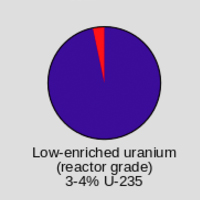Ferenc Dalnoki-Veress
July 14, 2015
The following is an excerpt published on TheConversation.com. It was also republished on July 17 on Homeland Security Newswire.
[…]

In the enrichment process, the more useful isotope uranium-235 is increased in proportion relative to the other uranium isotopes. Most power reactors use fuel containing uranium enriched to 3% to 5% uranium-235, whereas nuclear weapons use uranium that has been enriched to as high as 90%.
However, the enrichment process is not linear – it takes far more work to enrich uranium to 5% then it does to enrich from 5% to 90%.
And herein lies the problem. The P5+1 needs to be assured to reasonable certainty that even if Iran expels inspectors and enriches enough uranium for a bomb with current facilities, that time is long enough that a sufficient response can be organized. This “breakout” time is currently two to three months, but is extended to about a year in the final agreement.
The last route to a bomb is the possibility of the use of clandestine facilities to enrich uranium or extract plutonium. To close this gap, Iran will apply enhanced safeguard measures to its comprehensive safeguards agreement called the “Additional Protocol,” which is in force in 126 countries around the world. This agreement will not only severely limit Iran’s possibility to produce nuclear weapons but will open the doors to increased investment and herald a new era of international cooperation in the region.
[…]Continue reading at TheConversation.com:
The Science Behind the Deal
